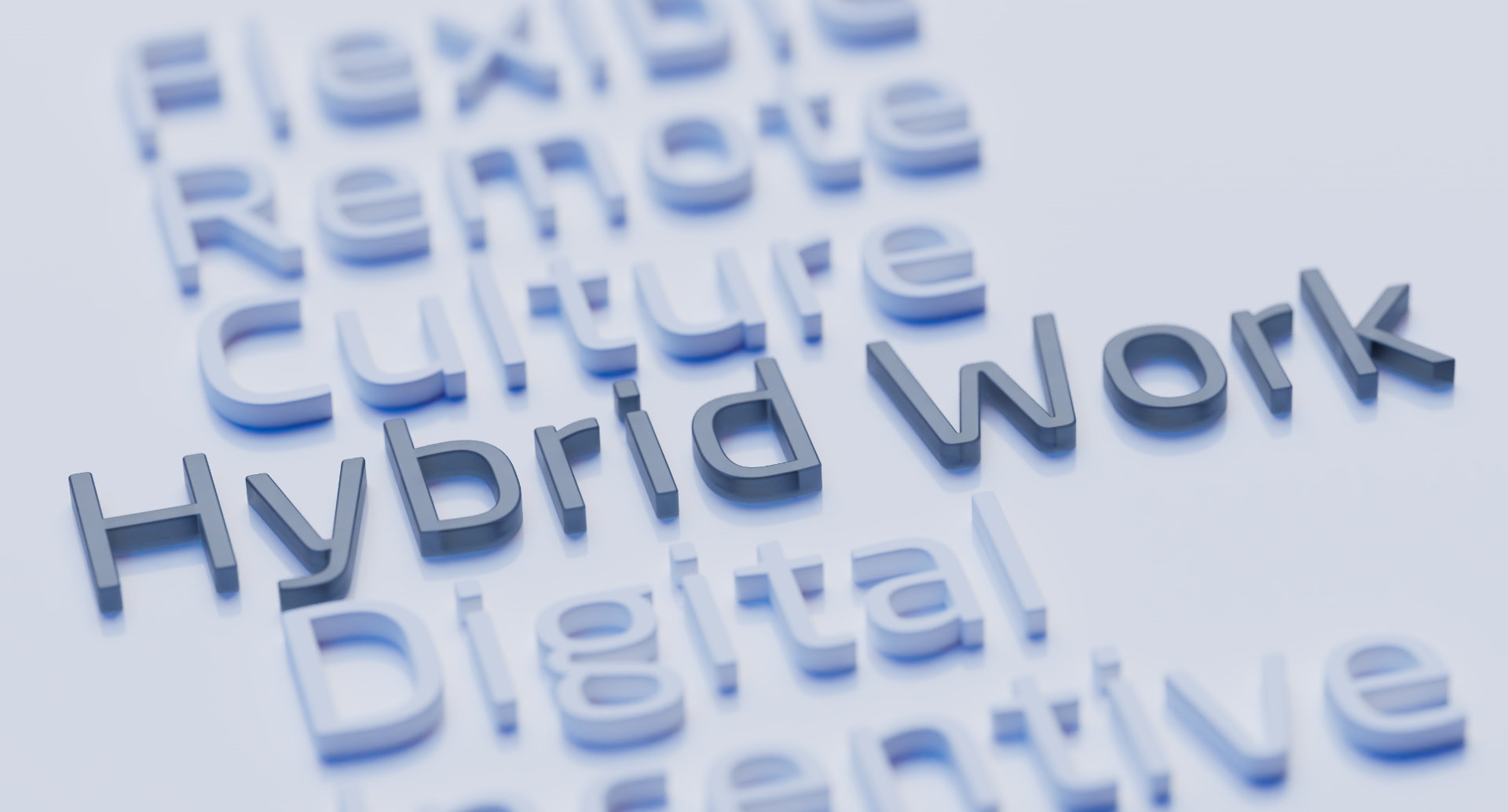Future of Work – Hybrid Working Model

Until a few years ago, most organizations could not imagine implementing remote work on a large scale. Millions of people perform their tasks from home or use the hybrid working model. The coronavirus pandemic had the most significant impact on this, but the changing needs of employees are also essential. What is a hybrid work model, and what should you know about it?
What is a hybrid work model?
It used to be natural that work was only done in the office. In some companies, employees worked remotely, but globally this was rare. This situation changed dramatically in the COVID-19 pandemic when millions worldwide had to work from home. Microsoft’s Work Trend Index survey from 2021 indicates that 73% of employees do not want to give up this possibility. At the same time, as many as 67% express the willingness to spend more time in the company. How can these two approaches be reconciled? The answer is a hybrid model of working.
A hybrid working model is a combination of remote and stationary work carried out in various configurations. The work takes place alternately at home and in the office, and its size depends on the established rules in the company.
How to organize work? Types of hybrid work models
Although each company individually sets the rules for the organization of work, two main hybrid work models can be identified:
- Limited – based on the imposed number of days in a given time (e.g., three days of stationary work a week).
- Unlimited – no arrangements are made, and the employee decides about the final division of work at home and in the office.
The first approach somewhat limits the freedom that is characteristic of hybrid work. The second, on the other hand, is related to the challenges of managing the work of various teams. Therefore, it is worth remembering hybrid work model best practices, which will allow you to avoid difficulties.
Hybrid work model – examples of work sharing from home and office
Work between home and office can be divided in different ways. How is it done most often?
Hybrid work model – examples:
- Permanent sections – some employees perform only stationary work, others work remotely.
- Rotation – the team is divided into groups that interchangeably work remotely and stationary at specific time intervals.
- Individual choice – employees usually work remotely, but they can come to the office anytime and carry out the tasks entrusted to them.
Interestingly, research shows that people working hybrid often come to the company on Mondays. It may be because meetings and team statuses are most often held on Mondays. It is also no surprise that people in the hybrid working model are the least likely to work from the office on Fridays.
Hybrid model of working – pros & cons
Hybrid work models are gaining popularity due to many advantages. However, it should be remembered that there are no perfect solutions without flaws – and this is also the case here.
Benefits of hybrid work model
Let’s start with the benefits of the hybrid work model, which are worth paying particular attention to.
- Flexibility – this model favors the reconciliation of professional and private duties (e.g., facilitating childcare).
- Saving time – reducing commuting to work and meeting clients.
- Better mood – improving work-life balance positively affects mood and a sense of happiness.
- Lower costs – the company incurs lower expenses related to the maintenance of the office and hiring new employees (e.g., lower payments on utilities, lower rent for a smaller office).
- Benefits for the environment – less pollution related to commuting and operating the office.
Work from home – hybrid model challenges
People appreciate work from home. A hybrid model is associated not only with advantages but also threats.
- Lack of identification with the group – especially with new people in the company.
- Decline in synergy and creativity – a reduction in cooperation effectiveness and generating creative ideas can be observed.
- Lack of breaks – employees take coffee breaks and have hallway conversations in the office. They often forget about breaks at home, making them more tired and less efficient.
- Problems with management – difficulties with managing a team divided into remote and stationary groups.
Hybrid work model – best practices
The hybrid working model has successfully replaced the standard stationary mode. It does not mean, however, that it is enough to let work from home and everything will sort out by itself. It is worth considering several hybrid work model best practices that will improve the company’s functioning.
Hybrid work model – examples of good practices:
- assistance in the development of employees,
- planning longer breaks between meetings,
- digitization of all business processes in the company,
- safety is one of the top priorities.
However, managers must listen to the needs of employees. The hybrid working model will only be effective if both parties derive satisfaction from it.
Hybrid model of working in Bluesoft
The most significant advantage of the hybrid system is the flexible approach to the needs of employees and the nature of their work. At Bluesoft, the hybrid model in a weekly cycle consists of 1-2 days of work from the office and 3-4 days of work from home.
When it comes to hybrid work, the challenge is integrating the entire team. At Bluesoft, each manager receives support from the HR and Administration departments to incorporate the team. Our office has a Chill Space, where employees can play table football or billiards. There is a large kitchen and a cafe with a professional coffee machine, which allows employees to spend time together and talk over delicious coffee. Every week there is breakfast on Mondays and fruit Wednesdays. Every month there is Beer Friday with pizza and beer.
Working in a hybrid model, it is vital that each employee maintains work-life balance and remember emotional hygiene. As a result, Bluesoft offers weekly webinars for Developmental Wednesday and Stress-Free Friday, where you can learn soft skills that can help you work.
The onboarding of new employees at BlueSoft has changed since the pandemic. The newly hired person must report to the company on his first work day. On this day, he signs the documents and picks up the equipment and the welcome pack.
Summary
Hybrid work is a challenge for company managers. However, this work model means flexibility for employees. Working in a hybrid model is inevitable, so it is crucial to create an organizational culture in the company that will support it. Hybrid work is also the optimal solution related to the uncertain pandemic situation around the world.
What Can We Do For Your Business?




